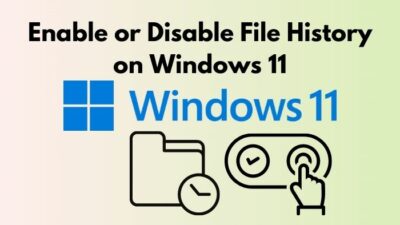Imagine yourself in a situation where you are playing your favorite intensive game or using heavy graphical software and find your computer is too laggy. In Windows 10, people often face this issue.
Sometimes your computer may only use half of your installed RAM for several reasons like improper Windows installation, inaccurate memory allocation settings, defective hardware connection, or outdated BIOS.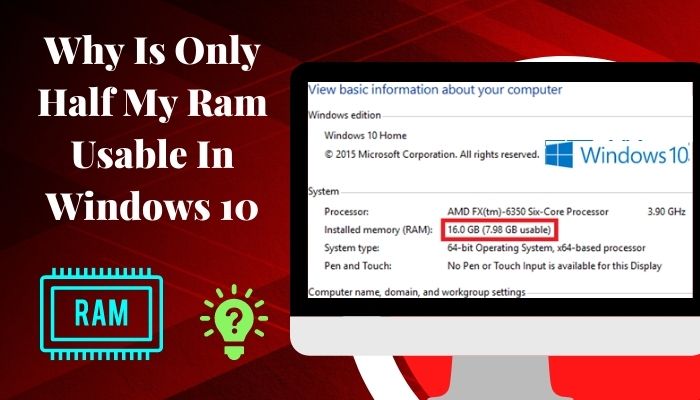
However, you can effortlessly resolve this annoying issue by tweaking the Windows system type, registry editor, or updating your hardware.
Keep reading until the end without skipping any instructions to eliminate your only half RAM usable issue.
Let’s get started!
What is RAM, and How Does It Work?
In this day and age, RAM is a well-known term in the world of computer technology. RAM stands for Random Access Memory. This is one of the essential components of your computer to determine your system performance.
RAM provides the place to store and access data on a short time basis. RAM stores the information of the currently running applications to load the application faster and efficiently.
The multitasking ability of your computer depends on your device’s RAM frequency and CAS latency. The more applications you want to run simultaneously, you will need more amount of RAM.
The performance and speed of your device highly depend on the installed RAM, meaning the RAM can improve computer speed. When you launch any application, the information to load the app is stored on the RAM, and it will dramatically decrease the app loading time.
RAM is basically used to store the data needed to access any application or application data quickly. You may need a lot of RAM for intensive software or gaming.
It is reported that sometimes people face a problem in Windows where they can only use half of the installed RAM. Several reasons can lead you to this problem.
Increasing RAM can help to improve CPU usage. Read the following discussions to learn why only half of your RAM is usable.
Why is Only Half of My RAM Usable?
Sometimes, Windows 10 only recognizes half the RAM installed on the device. Several reasons could lead you to this annoying problem. Let’s see the possible reasons why only half of your RAM is usable.
Here is the list of the reasons why only half of your RAM is usable:
System Type Issue
In general, Windows can run on both 32-bit and 64-bit systems. When the 64-bit system can run 128 GB of physical memory, a 32-bit system can run only 4 GB of physical memory.
If you use a 32-bit system, you will not be able to use more than 4 GB of RAM. Check whether you have installed the 64-bit or the 32-bit version.
Limited Memory Allocation
Another important reason for this problem is memory allocation. When you set a limitation for the useable memory, your device couldn’t access your RAM correctly.
By default, maximum memory allocation is turned off. However, you can manually change the settings at any given time. You can also quickly increase dedicated video RAM to get better performance.
Faulty Hardware Connection
A damaged motherboard can also lead you to this annoying problem. Sometimes, dust or debris blocks the RAM port, and Windows can not access the RAM properly.
Incompatible RAM
Incompatible RAM is another culprit in this issue. It is reported that If your RAM is not connected correctly to the motherboard, you can’t use the full potential of your RAM, and it can be limited to half of your RAM.
Outdated BIOS
Outdated BIOS often can limit half of your RAM from using it while in service. This is because of inappropriate or missing BIOS settings.
Outdated Windows
Along with other problems, outdated windows can lead you to the same situation where your system can’t use half of it’s available RAM. Additionally, you may face RAM connectivity issues because of an outdated version of Windows.
Outdated Drivers
The hardware connects to the system software with the help of different drivers. Any outdated driver can create trouble in establishing a connection between your RAM and the operating system.
How to Fix Only Half of RAM is Usable on Windows 10
When you see your computer is detecting your RAM appropriately, but still you are unable to use half of your RAM. You may wonder why this is happening. I have already discussed the reasons that can lead you to this annoying issue.
After knowing all the reasons, let’s dive into deep to resolve your device is only using half of it’s RAM issue.
Here are the steps to fix only half of the RAM is usable on Windows 10:
1. Windows System Type
As I discussed earlier, you can install Windows in two different system types. One of them is 64-bit, and the other one is 32-bit. Where 64-bit supports up to 128 GB of RAM, the 32-bit supports only 4 GB of RAM maximum.
If you can’t remember which system type you are currently using, you can effortlessly check the system type of your computer by following the next instructions.
Here are the steps to check the Windows system type:
- Right-click on the This PC icon.
- Select Properties.
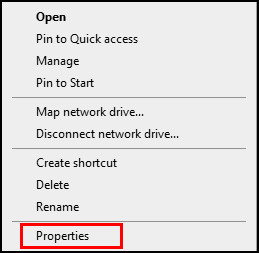
- Locate System type under Device Specifications.
- Check your computer’s System type.
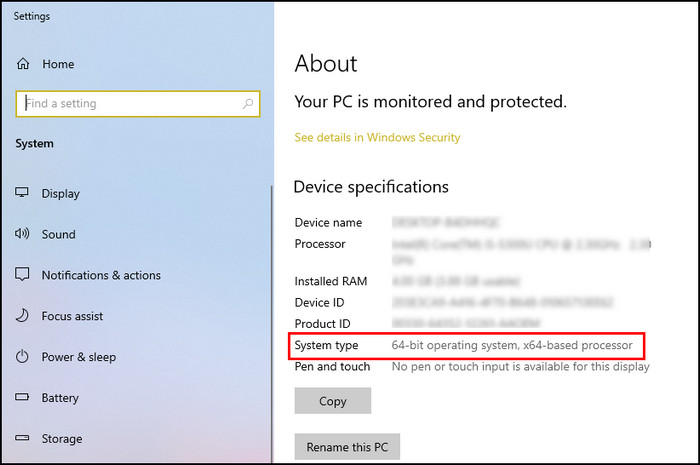
Next to the System type, you will see if you are currently running a 32-bit or a 64-bit version of Windows.
In case you are using a 32-bit version of Windows, your computer will only use 4 GB of RAM. So upgrade your system to a 64-bit version to use the maximum amount of RAM. You can effortlessly reinstall Windows to a 64-bit installation.
2. Maximum Memory Allocation
In the system configuration settings, an advanced option allows users to set a limitation for the usable memory available on their device. This system preserves a large amount of memory for the boot process.
This unnecessary setup can sometimes restrict users from using half of their usable RAM. Though, you can easily tweak this advanced setting to turn off the memory allocation by going through the below instructions.
Here are the methods to turn off the maximum memory allocation:
- Open the RUN dialogue box by pressing the Windows + R key together.
- Type msconfig and hit Enter.
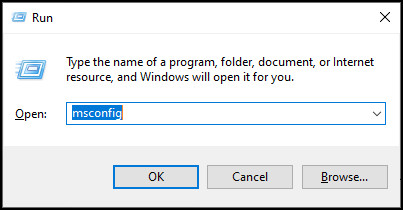
- Switch to the Boot tab from the System Configuration window.
- Click on Advanced options.
- Untick Maximum memory.
- Click Save to save the changes.
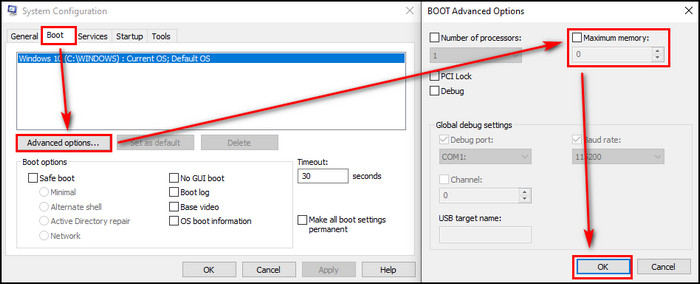
After saving the changes, restart your computer so your device can use all the memory available on your system.
3. Check Hardware Connection
Before trying any other methods below, I suggest you check your RAM to ensure it is appropriately connected to your motherboard’s DIMM slots. Any weak connection or dust in the RAM slot can restrict your system from accessing the RAM.
If you are using two RAMs at a time on your computer, remove one of them and check the memory usage to ensure your RAM is connected correctly with your Motherboard. Again try the same process with the other RAM.
You can also use your RAM on a different computer to check whether the problem is with your RAM or your motherboard slot is damaged.
Additionally, try switching your RAM to a different slot and check if that helps to eliminate only half of the RAM usable on the Windows 10 problem.
In case you are not familiar with building PCs, skip this step for now and move on to the following methods.
4. Tweak Registry Editor
Using the ClearPageFileAtShutdown from the registry editor can often solve only half of the RAM usable issue. You need to change the value of the ClearPageFileAtShutdown to 1 to clear the page file when shut-down your computer.
Here are the ways to tweak your registry editor settings:
- Open the RUN dialogue box by pressing the Windows + R key together.
- Type regedit and hit Enter.
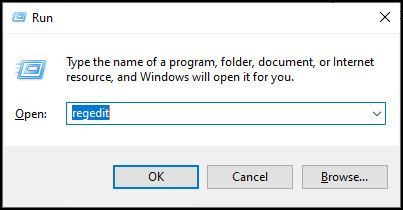
- Navigate to the HKEY_LOCAL_MACHINE > Systems > CurrentControlSet > Control > Session Manager > Memory Management from the left menu.
- Locate ClearPageFileAtShutdown from the right table.
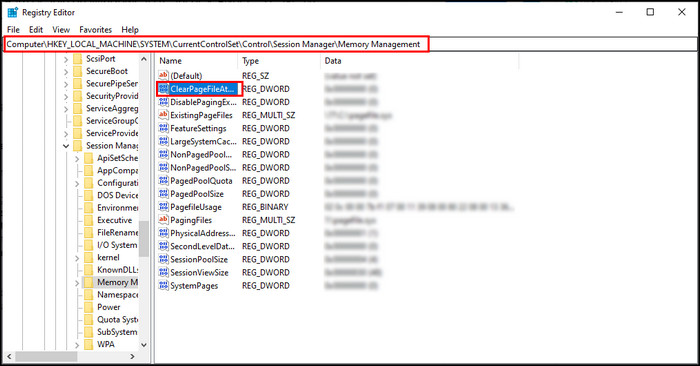
- Open the file by double-clicking on it.
- Change the value data to 1.
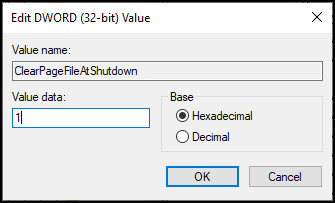
- Click OK to save the changes.
If the value data is already set to 1, you don’t need to change the value. After saving the changes, you need to restart your computer.
5. Update BIOS
If you are using an outdated BIOS on your computer, your system will not be able to access all the installed memory because of the BIOS.
Sometimes outdated BIOS memory bugs can lead to a problem where your device can not access your RAM entirely. Updating your BIOS to the latest version can efficiently resolve this annoying issue.
Depending on your motherboard manufacturer, there are several ways to update your BIOS. Almost every company has its own applications to help users to update the BIOS.
You can search by your motherboard model number to find the perfect tools for you. After downloading the proper application, use it to update your computer’s BIOS.
6. Update Windows and Drivers
Outdated Windows can cause numerous problems, including only half of the RAM usable issue. If you turn off automatic windows updates, you may miss the essential fixes Microsoft offers.
You can easily update your Windows to the latest version by following the below instructions. But I recommend updating the drivers first. If that doesn’t resolve the problem, then update windows.
Here are the steps to update Windows to the latest version:
- Click on the Windows icon from the left side of your computer.
- Type Windows Update Settings and hit Enter to open Windows update settings.
- Click on the Windows Update from the left pane.
- Select Check for updates.
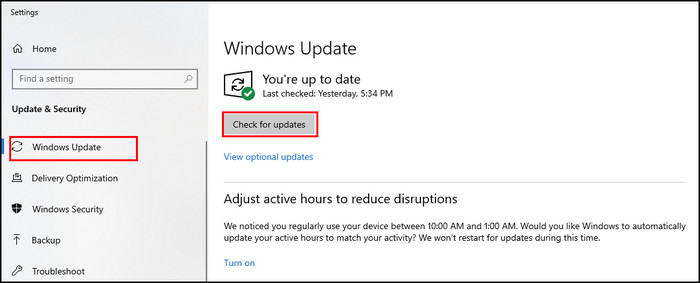
Windows will search for all available updates. Wait until the update gets ready to install and install it. Finally, restart your computer to finish the updating process.
7. Restore BIOS
If your BIOS settings are not correctly configured, you may face only half of the RAM usable problem. You can load your default BIOS settings from the BIOS menu to resolve this issue.
While working with BIOS, ensure you know what you are doing with the BIOS settings, or you can possibly add more problems to your list.
Depending on your motherboard model, you may need to use different keys to enter the BIOS settings. When booting up, most of the motherboard’s BIOS can be accessed by pressing the F1, F2, F12, Del, or Esc keys.
Follow the instructions below to restore your BIOS to the default successfully.
Here are the methods to restore your BIOS to the default settings:
- Boot your system into BIOS by pressing the correct function key.
- Click on the Restore Settings and confirm to restore the BIOS when promoted.
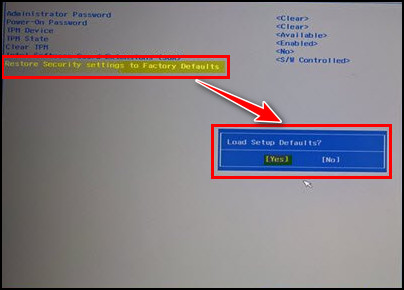
- Exit the BIOS and boot into Windows.
After successfully changing the BIOS settings to default, now check if this solves your RAM management issue.
If the problem persists, try changing your Hard Drive. Several users claimed that a faulty hard drive leads them to this annoying problem.
Final Thoughts
Random Access Memory (RAM) is a volatile storage memory used in phones, computers, and laptops. In Windows 10, people often face a problem where only half of their RAM is usable.
Inappropriate Windows installation, wrong memory allocation settings, faulty hardware connection, outdated BIOS, outdated drivers, or outdated Windows can lead to these irritating problems.
I have covered all the essential fixes to resolve this annoying issue in this well-researched article.
Did you have any additional queries? Don’t hesitate to mention them in the below comment section.



